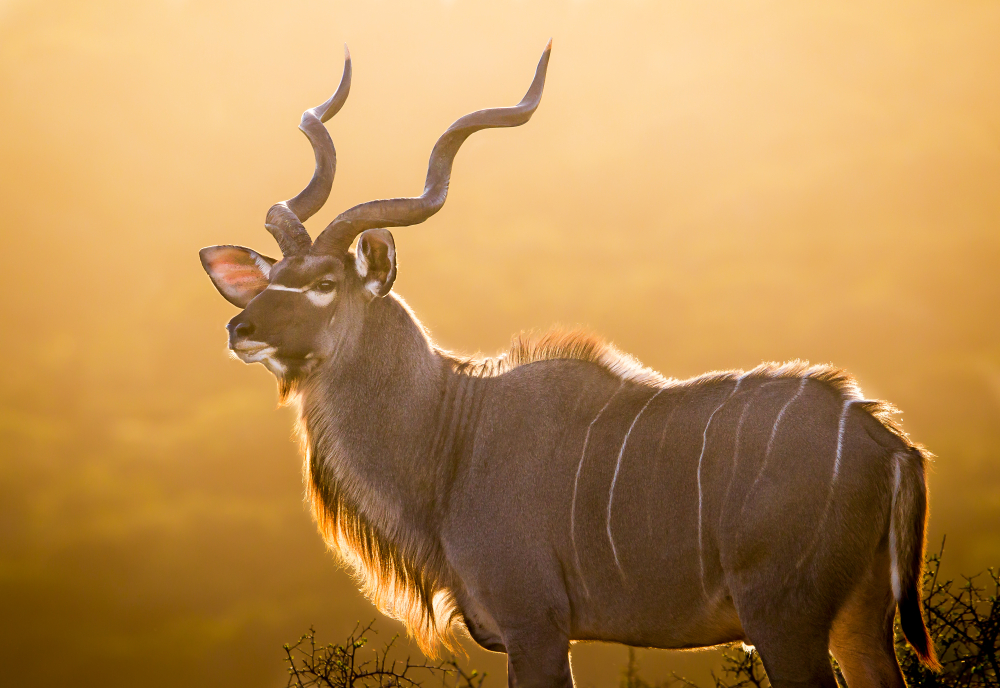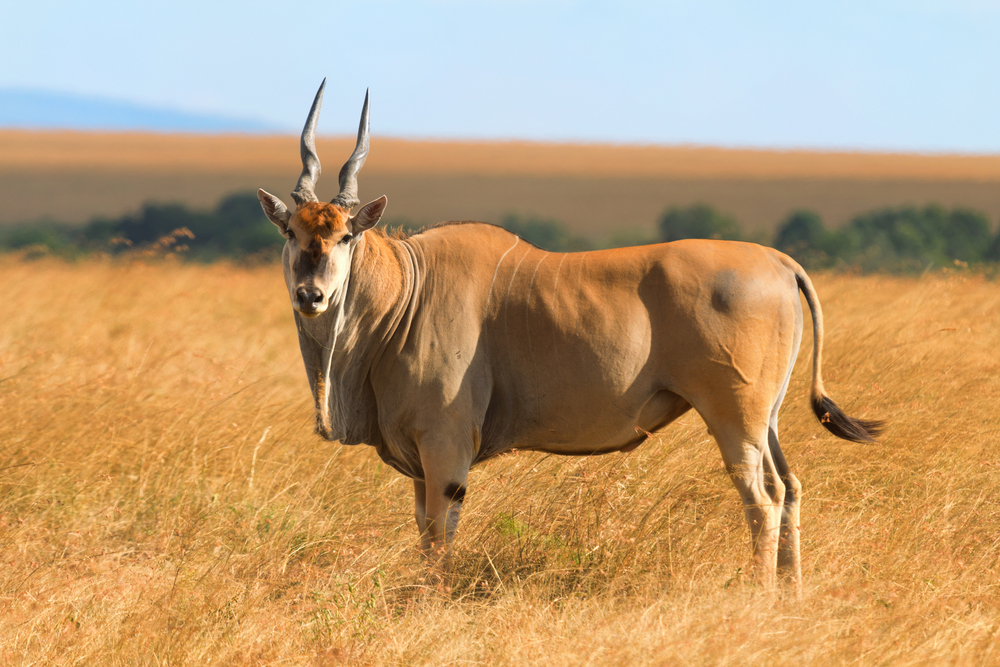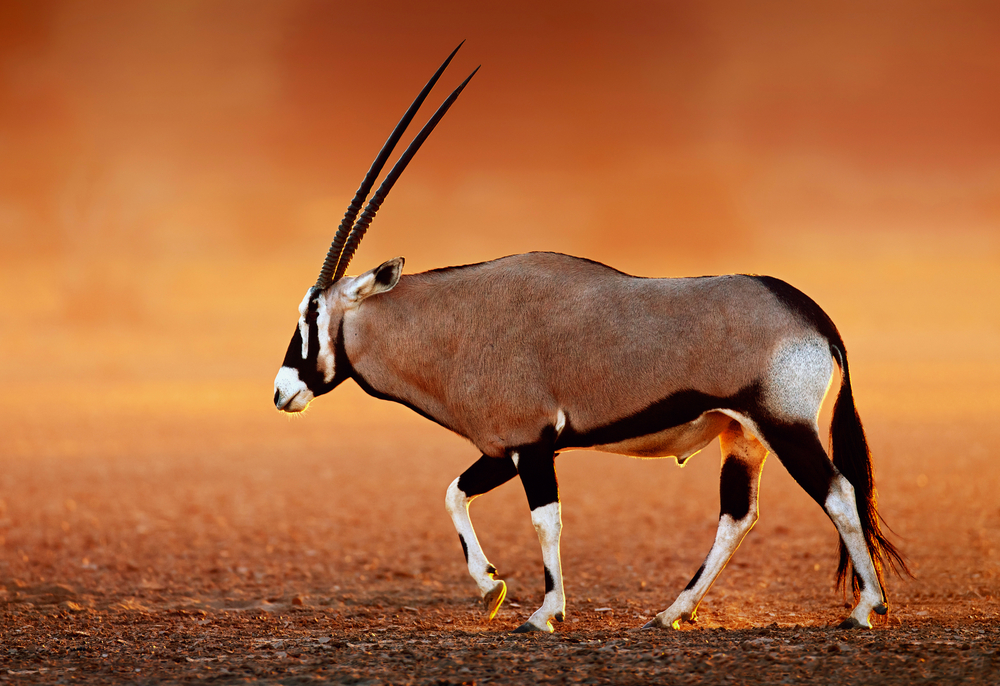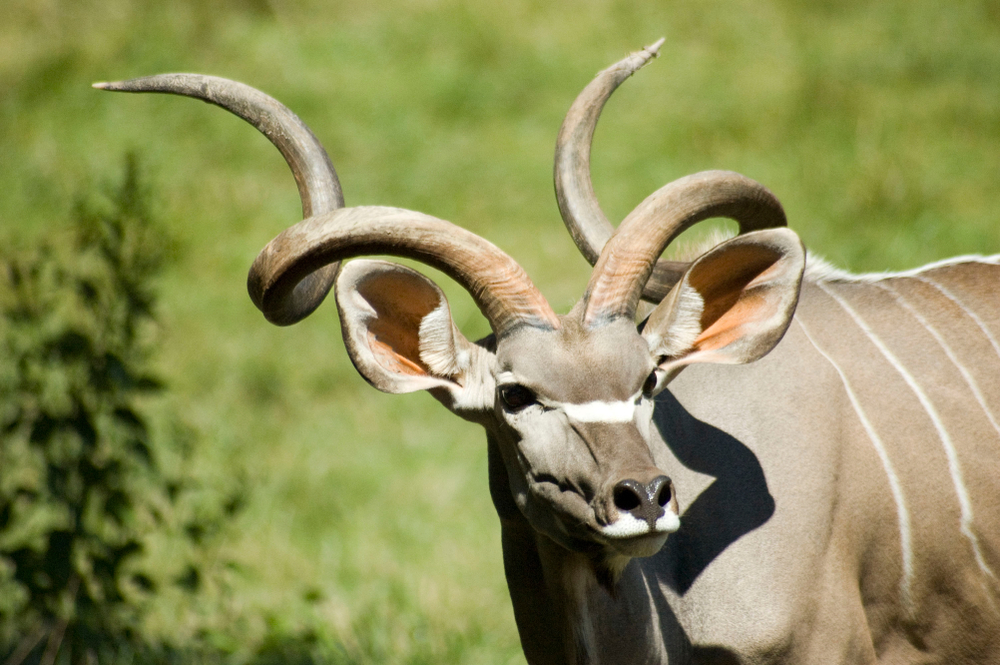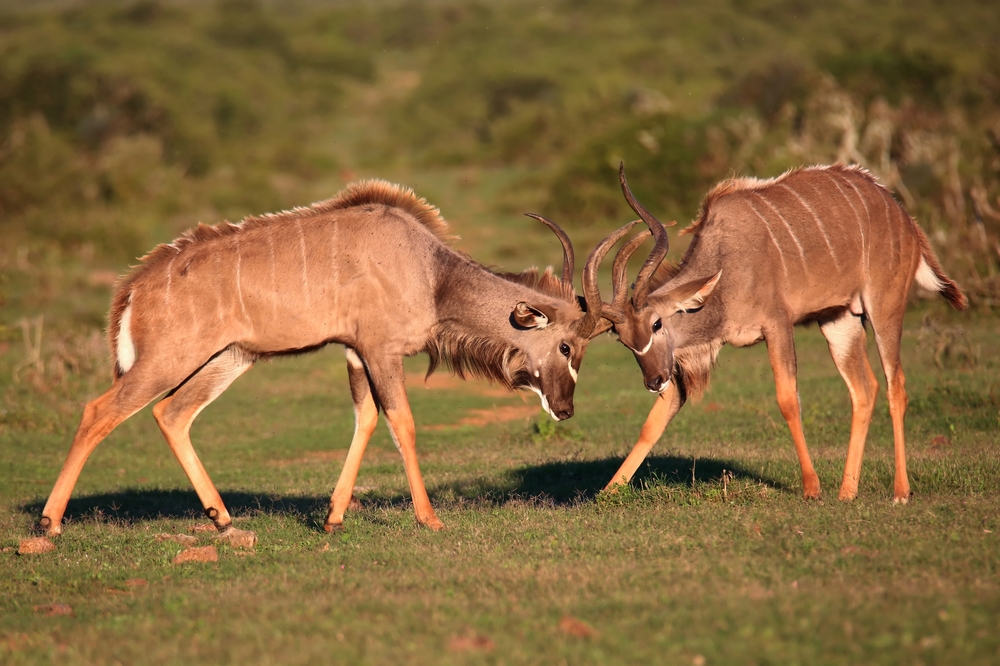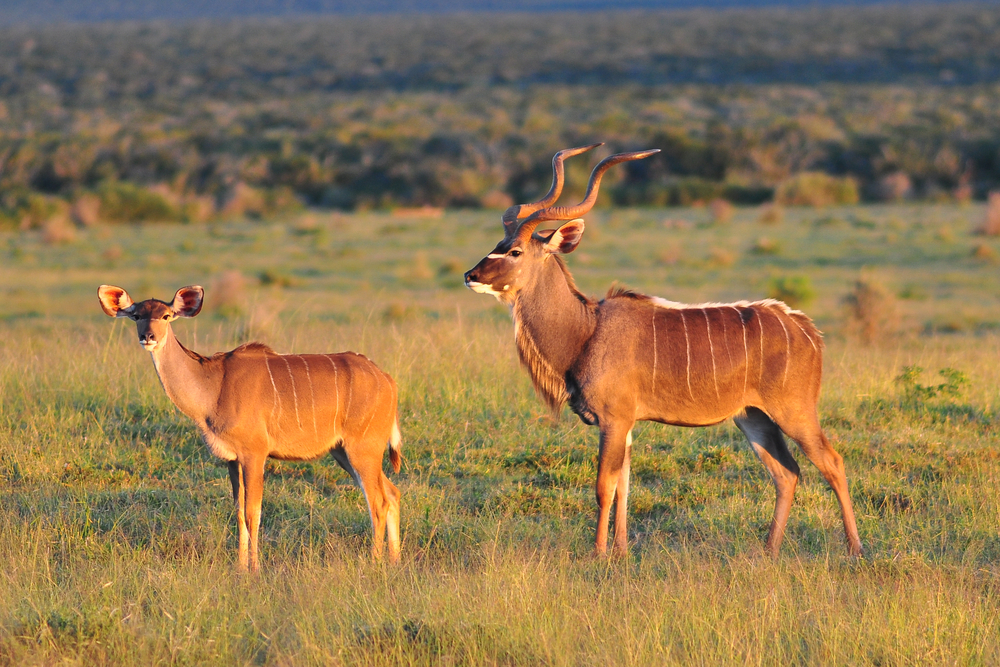Kudus (Tragelaphus strepsiceros) possess several distinctive characteristics that differentiate them from other antelope species. Here’s a comparison between Kudus and other antelopes:
Physical Characteristics:
- Horns: Male Kudus are known for their long, spiral-shaped horns, which are among the most elaborate in the antelope family. Female Kudus also have horns, but they are shorter and less twisted. Many other antelope species have different horn shapes or lack them entirely.
- Coat Color: Kudus have a grizzled gray or brown coat with vertical white stripes on their body, especially on their flanks. These stripes are unique to Kudus and help with camouflage. Other antelope species have different coat colors and patterns adapted to their habitats.
Habitat Preferences:
- Kudus are adaptable to various environments, including woodlands, savannas, and mountainous regions. They can also be found near water sources and exhibit semi-aquatic behavior when necessary. Some other antelope species have more specific habitat preferences.
Reproductive Behavior:
- Kudus do not have a strict breeding season and can reproduce throughout the year, depending on local conditions. In contrast, some antelope species have specific breeding seasons tied to environmental cues.
- Mating behaviors, including courtship and territorial displays, can vary among different antelope species.
Diet:
- Kudus are primarily browsers, feeding on leaves, shoots, fruits, and flowers. This dietary preference sets them apart from antelope species that are primarily grazers or mixed-feeders with different feeding habits.
Social Structure:
- Kudus are known to form small groups or herds, contributing to their safety and cooperative foraging. The size and dynamics of these groups can vary among antelope species, with some being more solitary or forming larger herds.
Predators:
- Kudus face predation from various carnivores, including lions, leopards, and hyenas. The presence of these predators can influence their behavior and vigilance. Other antelope species may have different sets of predators based on their habitats.
Adaptations to Water:
- Kudus exhibit semi-aquatic behavior, including wading into shallow water and swimming if necessary. This adaptation is relatively rare among antelope species.
Cultural Significance:
- Kudus hold cultural significance in African societies and art, often symbolizing strength and natural beauty. Their horns are used in traditional ceremonies and crafts. Other antelope species may not have the same cultural prominence.
While Kudus share similarities with other antelope in terms of their role as herbivorous mammals, their distinctive features, behaviors, and adaptations make them a unique and iconic species in Africa’s diverse antelope family.



































































